Bookshelf Size Chart
Small Bookshelf
Dimensions: 24″ x 30″ x 12″ (61 x 76 x 30 cm)
Capacity: 20-40 books
Use Case: Ideal for small spaces, desks, or side tables. Great for compact storage.
Standard Bookshelf
Dimensions: 36″ x 48″ x 12″ (91 x 122 x 30 cm)
Capacity: 50-75 books
Use Case: Common size for general use in living rooms, bedrooms, or offices.
Tall Bookshelf
Dimensions: 60″ x 30″ x 12″ (152 x 76 x 30 cm)
Capacity: 100-150 books
Use Case: Perfect for maximizing vertical space in apartments or homes.
Corner Bookshelf
Dimensions: 72″ x 24″ x 24″ (183 x 61 x 61 cm)
Capacity: 80-100 books
Use Case: Fits into corners for space-saving, great for smaller rooms.
Wide Bookshelf
Dimensions: 36″ x 60″ x 12″ (91 x 152 x 30 cm)
Capacity: 100-150 books
Use Case: A wider option for larger spaces, perfect for organizing large collections.
Open Shelf Bookcase
Dimensions: 36″ x 72″ x 12″ (91 x 183 x 30 cm)
Capacity: 150-200 books
Use Case: Provides lots of space for books and decorative items, often open-backed.
Floating Bookshelf
Dimensions: 48″ x 6″ x 6″ (122 x 15 x 15 cm)
Capacity: 10-20 books
Use Case: A minimalist design that mounts to the wall, ideal for small spaces or modern designs.
Library Bookshelf
Dimensions: 84″ x 48″ x 14″ (213 x 122 x 36 cm)
Capacity: 200+ books
Use Case: Large, often used in libraries, offices, or spacious living rooms for extensive collections.
Adjustable Bookshelf
Dimensions: 60″ x 36″ x 12″ (152 x 91 x 30 cm)
Capacity: 75-125 books
Use Case: Features adjustable shelves to accommodate varying book sizes.
Children’s Bookshelf
Dimensions: 36″ x 24″ x 12″ (91 x 61 x 30 cm)
Capacity: 20-40 books
Use Case: Smaller shelves designed for children’s books, often lower height for easy access.
Note: Dimensions and capacities may vary based on design, material, and structure of the bookshelf.
Looking for the perfect fit? Check Out These Best-Selling Bookshelf.
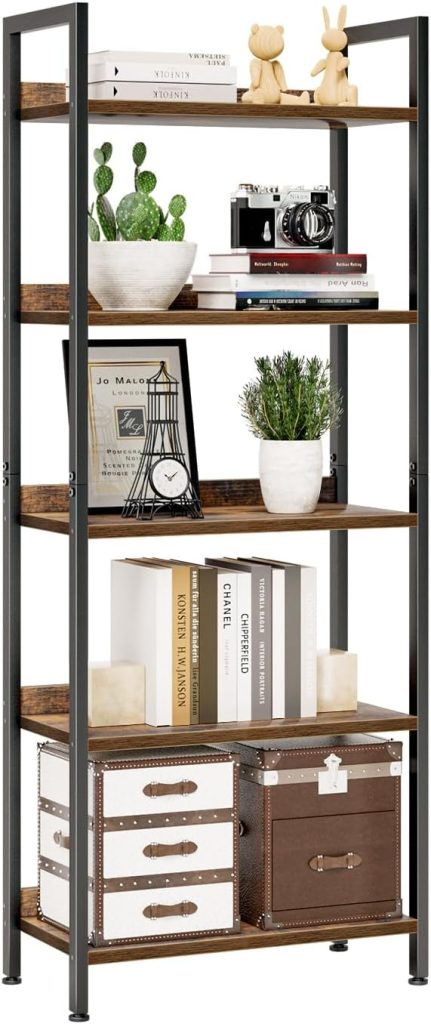
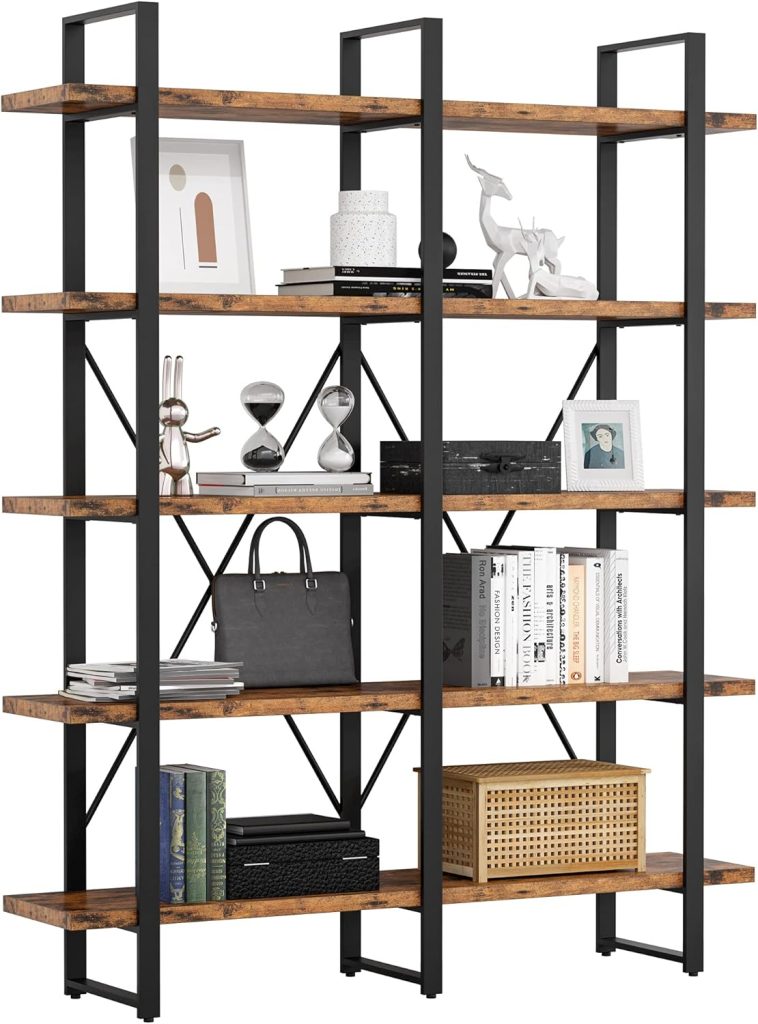
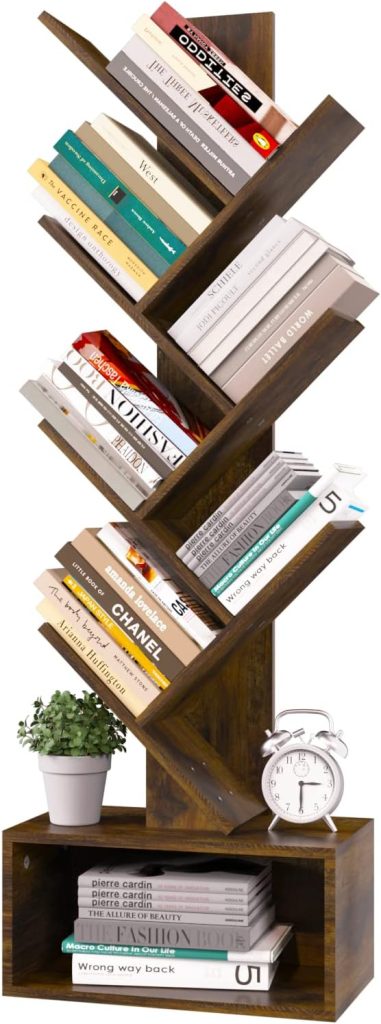
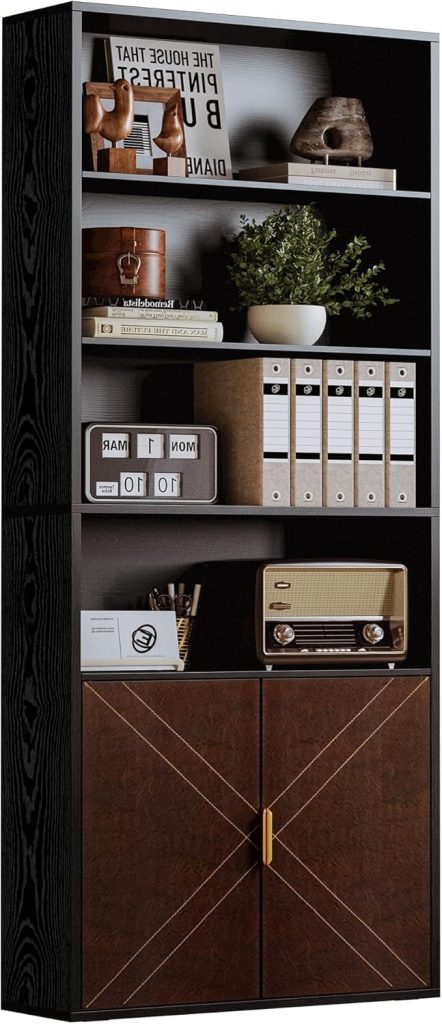
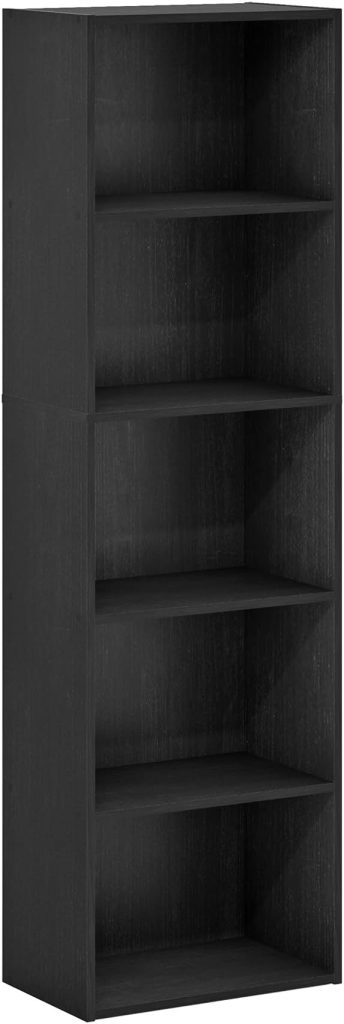
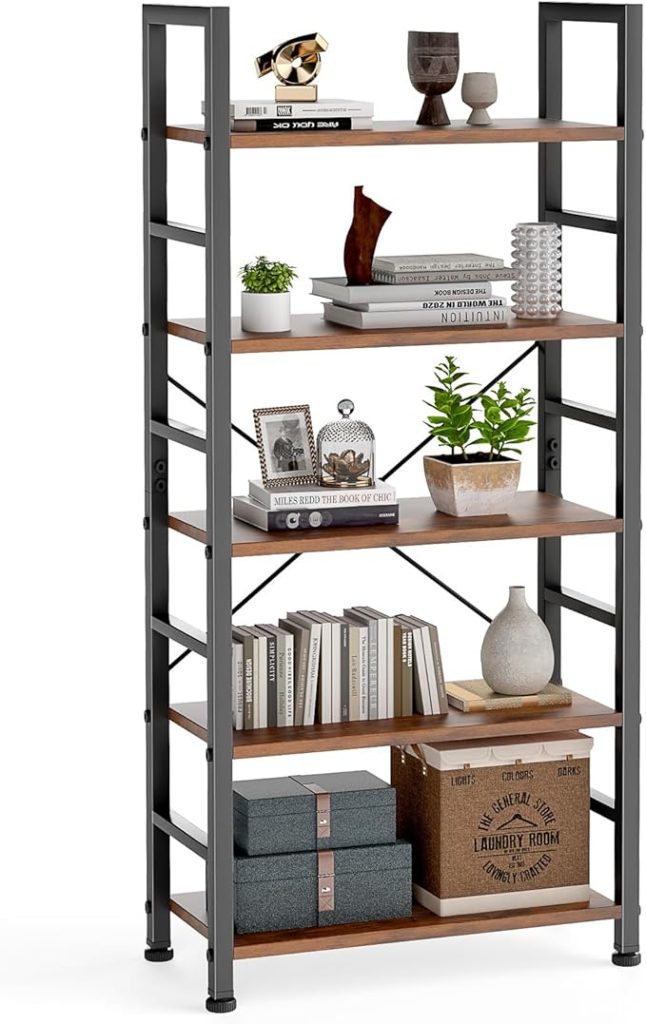
A bookshelf size chart can help users understand the standard dimensions and capacities for different bookshelf types. Here’s a guide that includes common bookshelf sizes and their typical uses. This chart can also help when considering furniture for specific spaces like living rooms, bedrooms, or offices.
Bookshelf Size Chart
| Bookshelf Type | Dimensions (Height x Width x Depth) | Typical Capacity (Books) | Use Case |
|---|---|---|---|
| Small Bookshelf | 24″ x 30″ x 12″ (61 x 76 x 30 cm) | 20-40 books | Ideal for small spaces, desks, or side tables. Great for compact storage. |
| Standard Bookshelf | 36″ x 48″ x 12″ (91 x 122 x 30 cm) | 50-75 books | Common size for general use in living rooms, bedrooms, or offices. |
| Tall Bookshelf | 60″ x 30″ x 12″ (152 x 76 x 30 cm) | 100-150 books | Perfect for maximizing vertical space in apartments or homes. |
| Corner Bookshelf | 72″ x 24″ x 24″ (183 x 61 x 61 cm) | 80-100 books | Fits into corners for space-saving, great for smaller rooms. |
| Wide Bookshelf | 36″ x 60″ x 12″ (91 x 152 x 30 cm) | 100-150 books | A wider option for larger spaces, perfect for organizing large collections. |
| Open Shelf Bookcase | 36″ x 72″ x 12″ (91 x 183 x 30 cm) | 150-200 books | Provides lots of space for books and decorative items, often open-backed. |
| Floating Bookshelf | 48″ x 6″ x 6″ (122 x 15 x 15 cm) | 10-20 books | A minimalist design that mounts to the wall, ideal for small spaces or modern designs. |
| Library Bookshelf | 84″ x 48″ x 14″ (213 x 122 x 36 cm) | 200+ books | Large, often used in libraries, offices, or spacious living rooms for extensive collections. |
| Adjustable Bookshelf | 60″ x 36″ x 12″ (152 x 91 x 30 cm) | 75-125 books | Features adjustable shelves to accommodate varying book sizes. |
| Children’s Bookshelf | 36″ x 24″ x 12″ (91 x 61 x 30 cm) | 20-40 books | Smaller shelves designed for children’s books, often lower height for easy access. |
Key Considerations for Choosing a Bookshelf:
- Space Availability: Measure the space where the bookshelf will be placed. Consider not just the height and width but also the depth (to ensure it fits in the area without taking up too much space).
- Capacity: The number of books a bookshelf can hold depends on the dimensions of the shelves and the size of the books. Some bookshelves have adjustable shelves to accommodate larger books.
- Room Use: Choose a bookshelf type that fits the room’s decor. For example, floating bookshelves work well for modern or minimalist rooms, while large library bookshelves suit traditional or spacious environments.
- Material: Shelves can come in wood, metal, glass, or a combination of materials. Consider what matches your room’s aesthetic and provides the strength needed for the weight of books.
- Functionality: Some bookshelves come with additional features, like closed storage (for a cleaner look), drawers, or cabinets for extra organization.
Common Book Storage Options
- Open Shelves: Provide easy access to books and are often used for decorative items or books that are regularly accessed.
- Closed Bookshelves (Cabinets): Ideal for those who want to store books and other items out of sight, keeping the space looking neat and organized.
- Corner Bookshelves: Designed to fit snugly in corners, they can be a great solution for utilizing underused areas of the room.
FAQs About Bookshelf Size Chart
1. What are the standard bookshelf sizes?
Bookshelves come in various sizes, but common dimensions include:
- Small: 24-36 inches (61-91 cm) high – Ideal for compact spaces.
- Medium: 48-60 inches (122-152 cm) high – Fits most rooms.
- Large: 72+ inches (183 cm+) high – Best for extensive book collections.
2. How deep should a bookshelf be?
- Standard depth: 10-12 inches (25-30 cm) – Fits most books.
- Shallow depth: 6-8 inches (15-20 cm) – Ideal for paperbacks and small items.
- Deep shelves: 14-18 inches (35-46 cm) – Great for large books, binders, or decorative items.
3. What is the typical width of a bookshelf?
Bookshelves range from 24 inches (61 cm) to 48 inches (122 cm) wide, with wider units available for larger storage needs.
4. How much space should be between shelves?
- Paperbacks: 8-10 inches (20-25 cm)
- Hardcovers & textbooks: 10-12 inches (25-30 cm)
- Large books & binders: 12-15 inches (30-38 cm)
5. What is the best bookshelf size for a small room?
A tall, narrow bookshelf (24-30 inches wide, 72 inches high) maximizes vertical space while keeping a small footprint.
6. Can I adjust shelf height on most bookshelves?
Many modern bookshelves come with adjustable shelves, allowing customization for different book sizes.
7. How much weight can a bookshelf hold?
- Basic wooden shelves: 20-40 lbs (9-18 kg) per shelf
- Heavy-duty bookshelves: 50-100 lbs (23-45 kg) per shelf (depends on material and support).
8. What is the ideal bookshelf size for a home office?
A medium bookshelf (48-60 inches high, 12 inches deep) is perfect for storing books, files, and office supplies.
9. What materials are best for sturdy bookshelves?
- Solid wood: Durable but heavy.
- Plywood/MDF: Affordable and lightweight.
- Metal: Strong and modern-looking, ideal for industrial styles.
10. How do I choose the right bookshelf size for my needs?
Consider your book collection, available space, and intended use. For small spaces, go tall and narrow; for large storage, opt for wide, deep shelves.
Conclusion
Choosing the right bookshelf size depends on your space, book collection, and functional needs. A small bookshelf is perfect for decorative storage, while larger bookshelves can accommodate an extensive collection and double as a room’s centerpiece. Consider the height, width, and depth of the bookshelf, as well as its overall style and stability, to ensure it fits both your aesthetic and storage requirements. 📚✨






